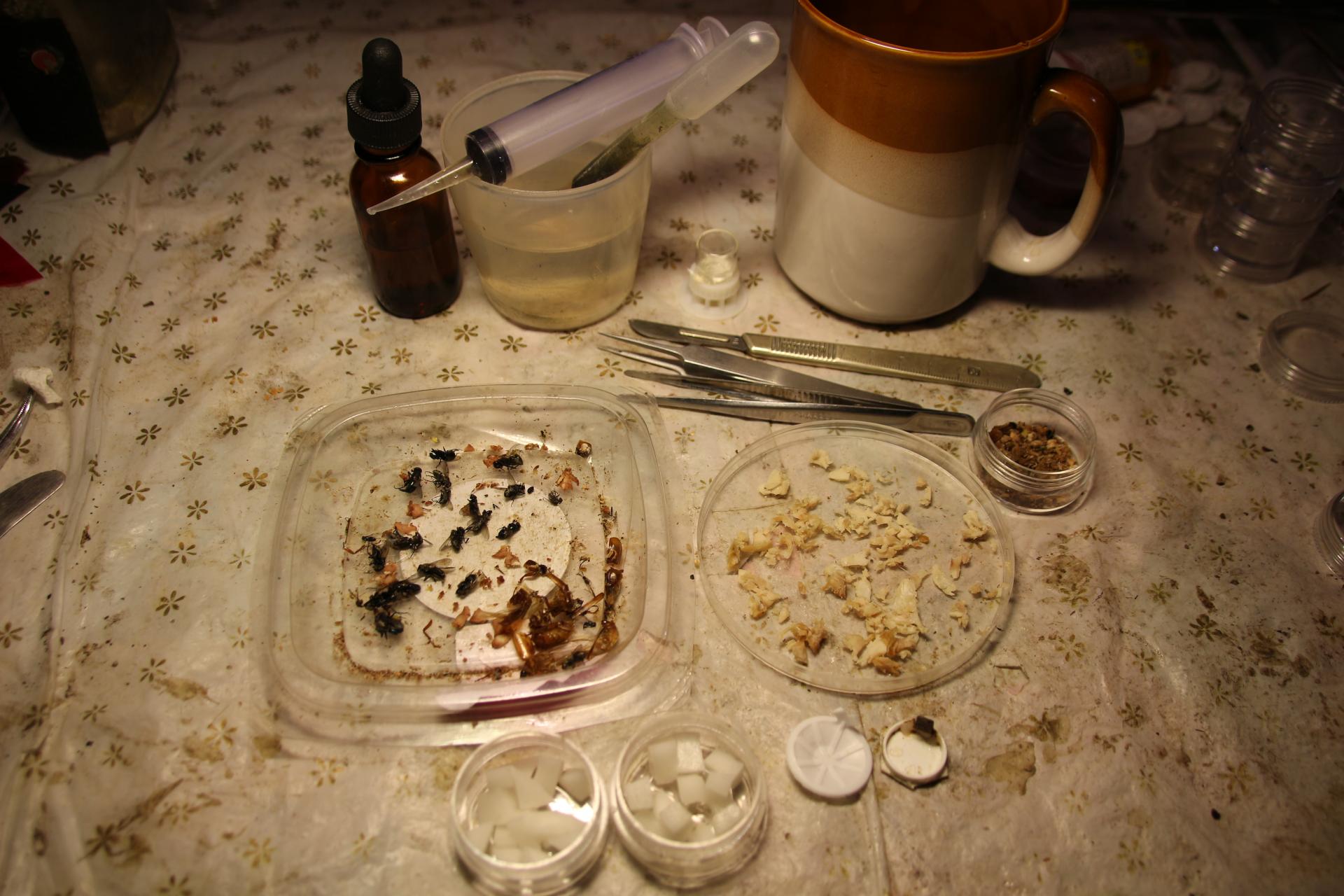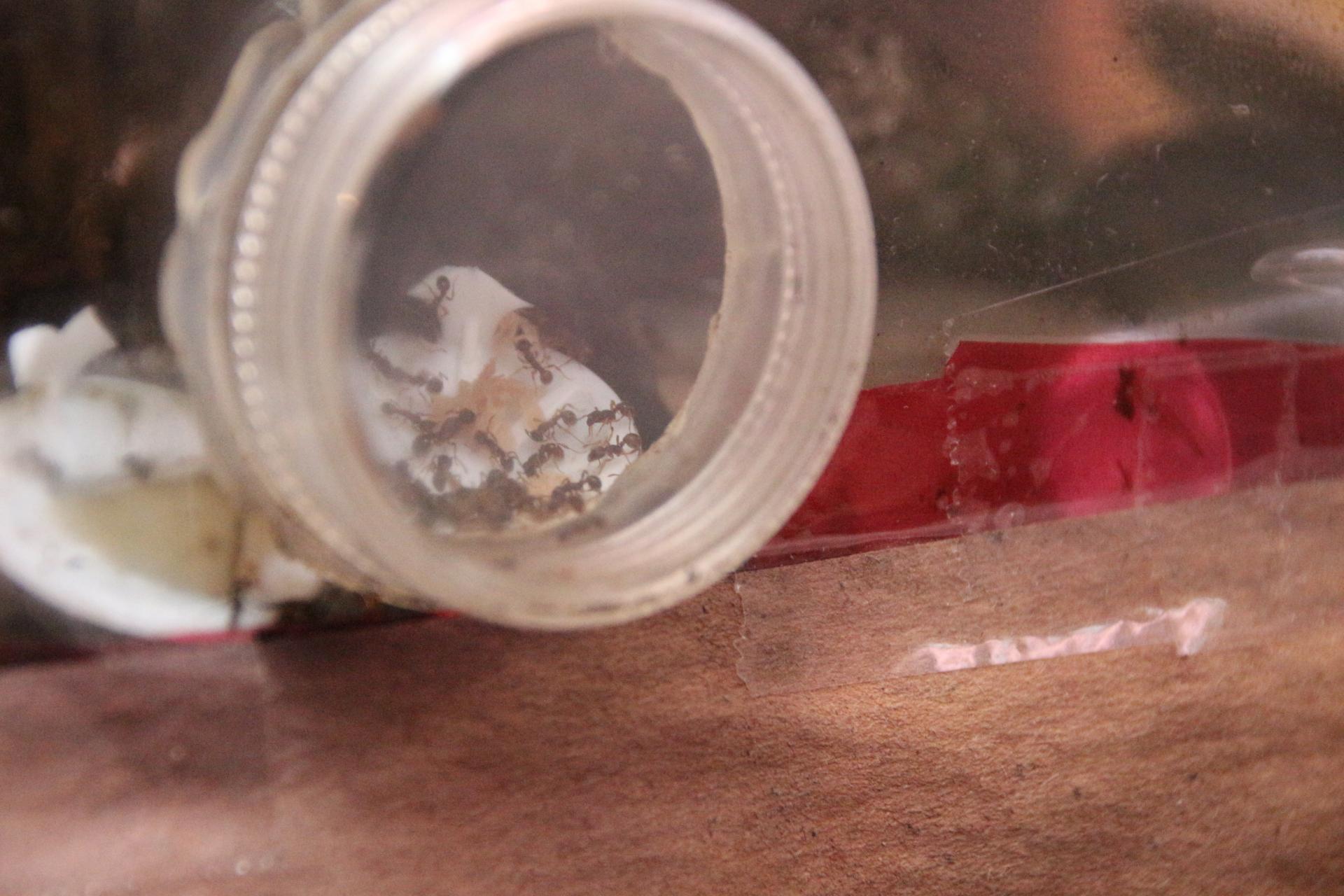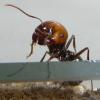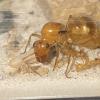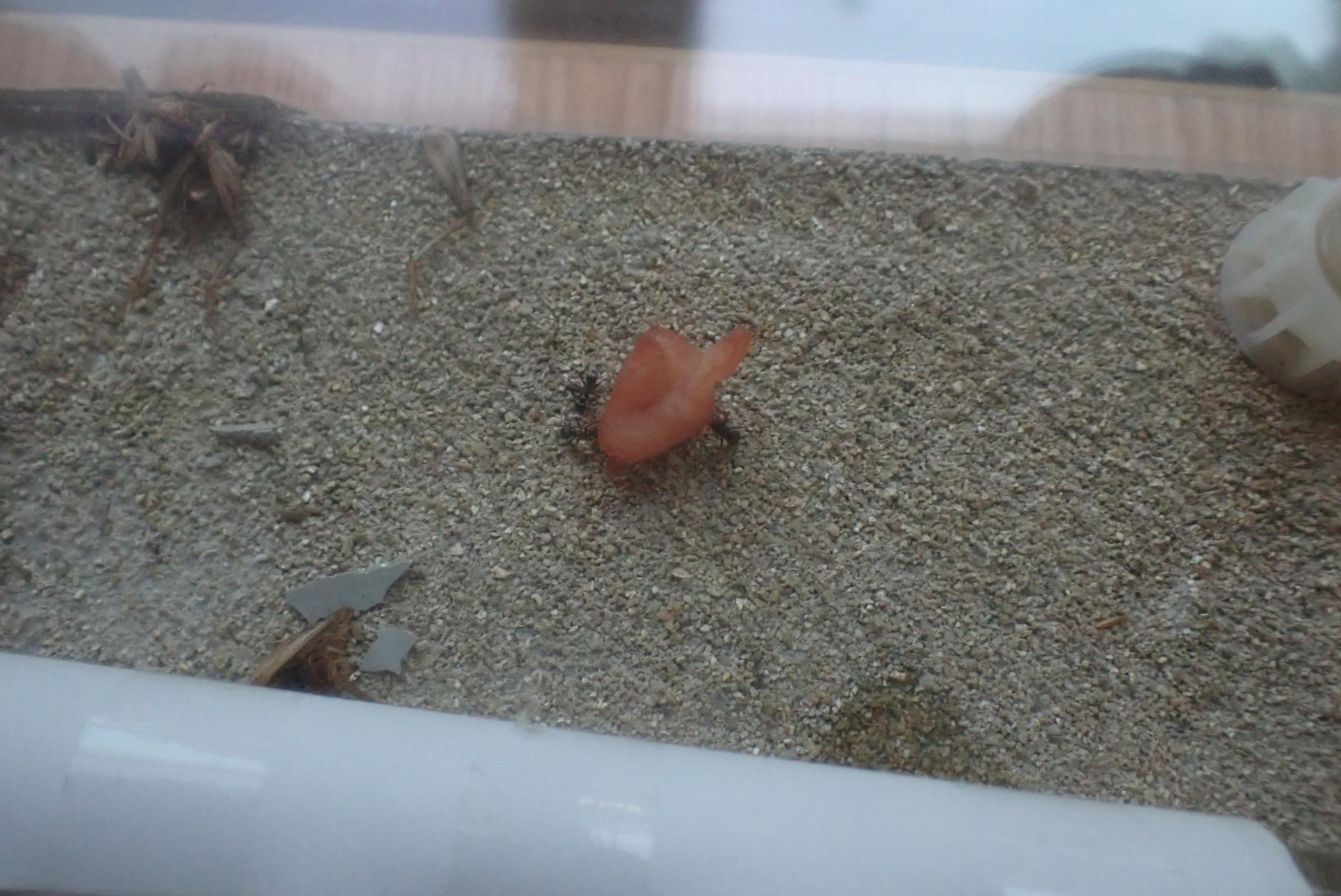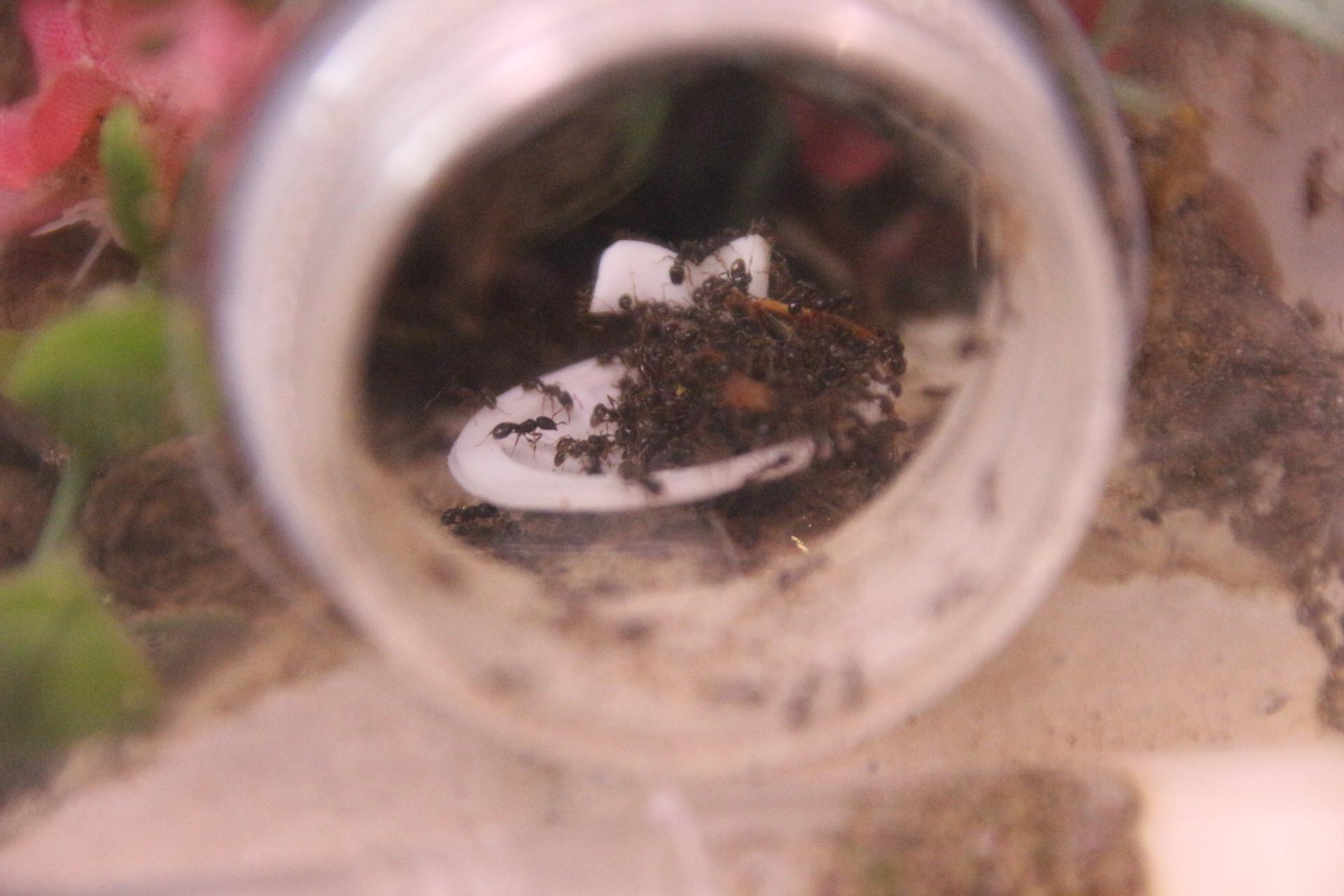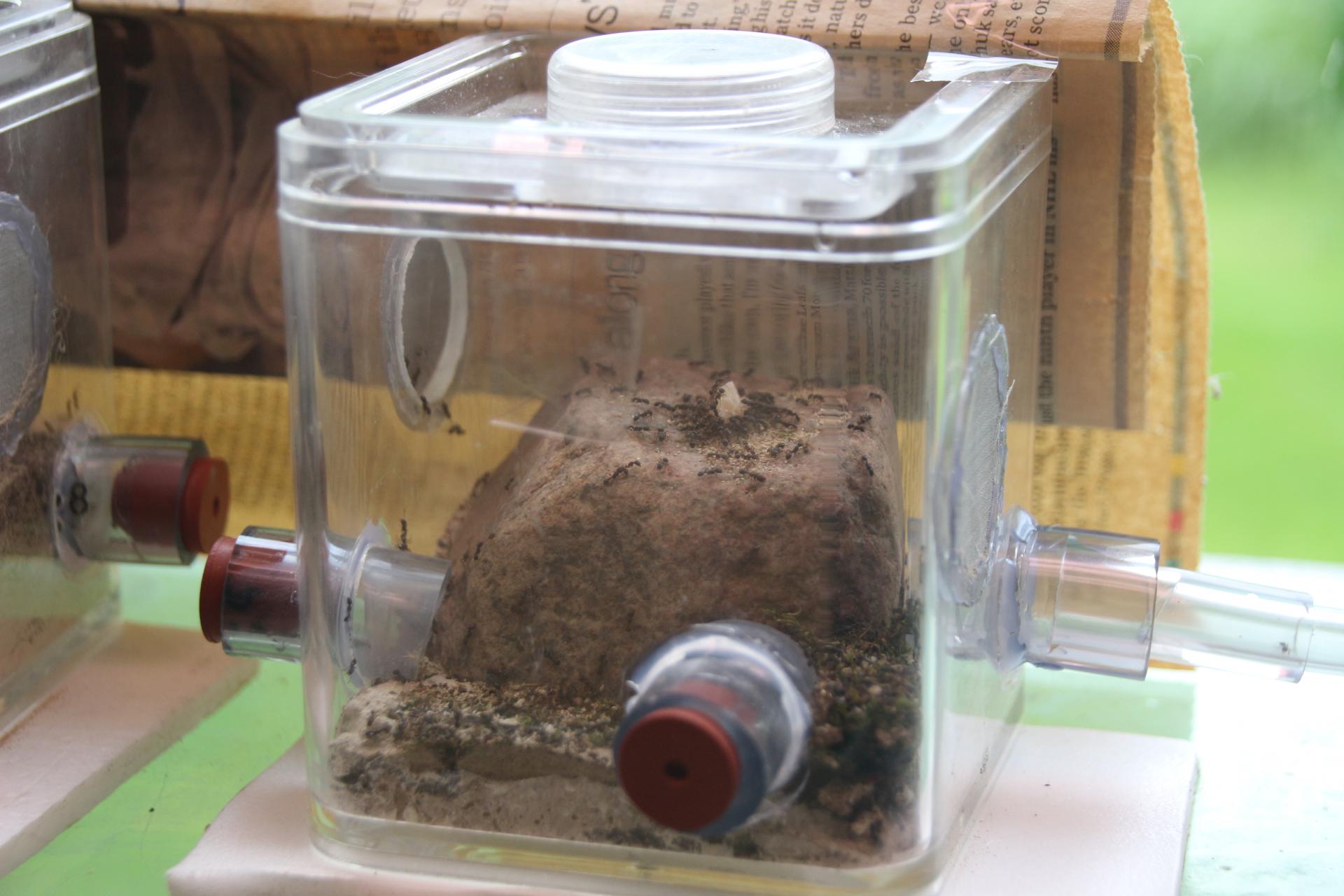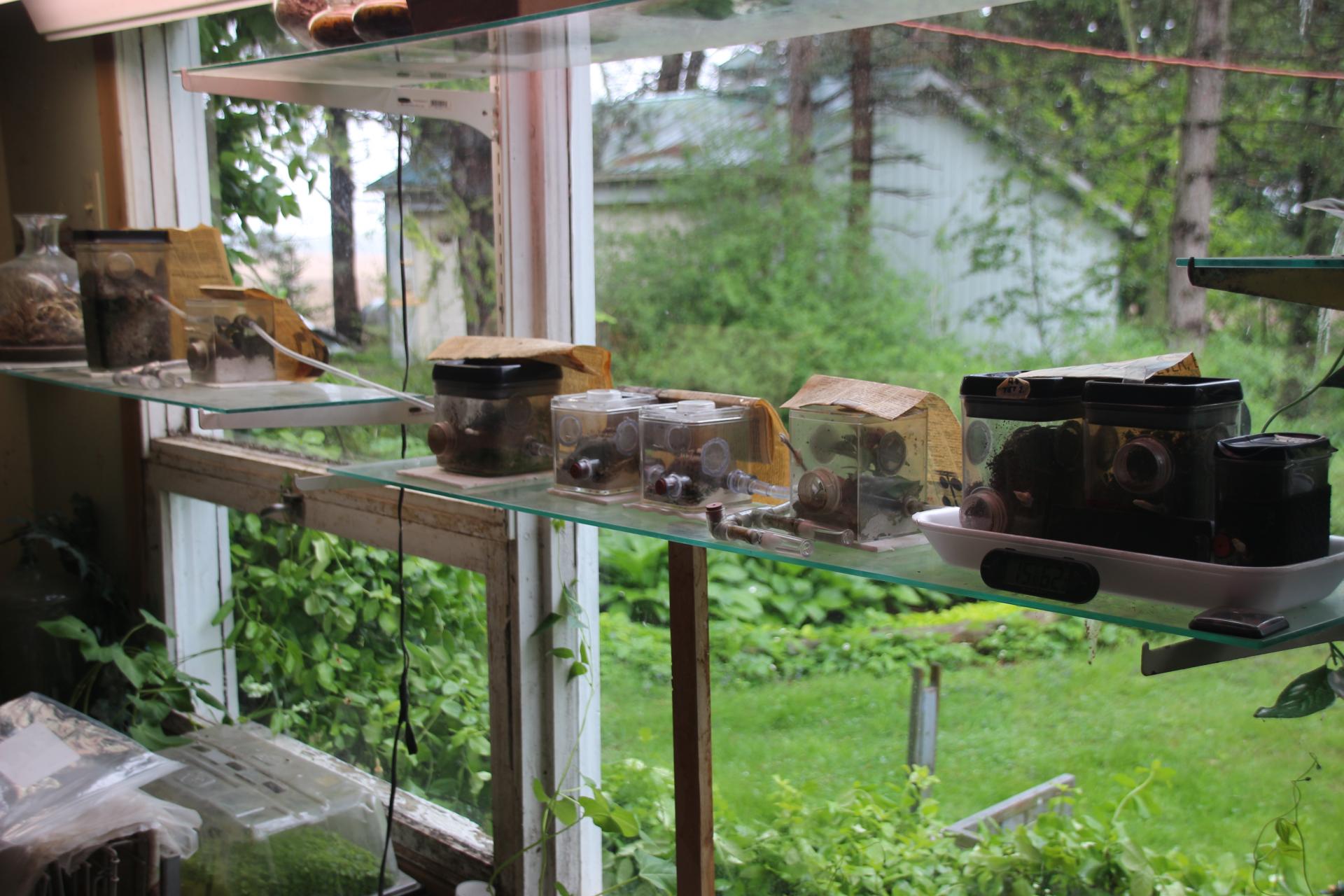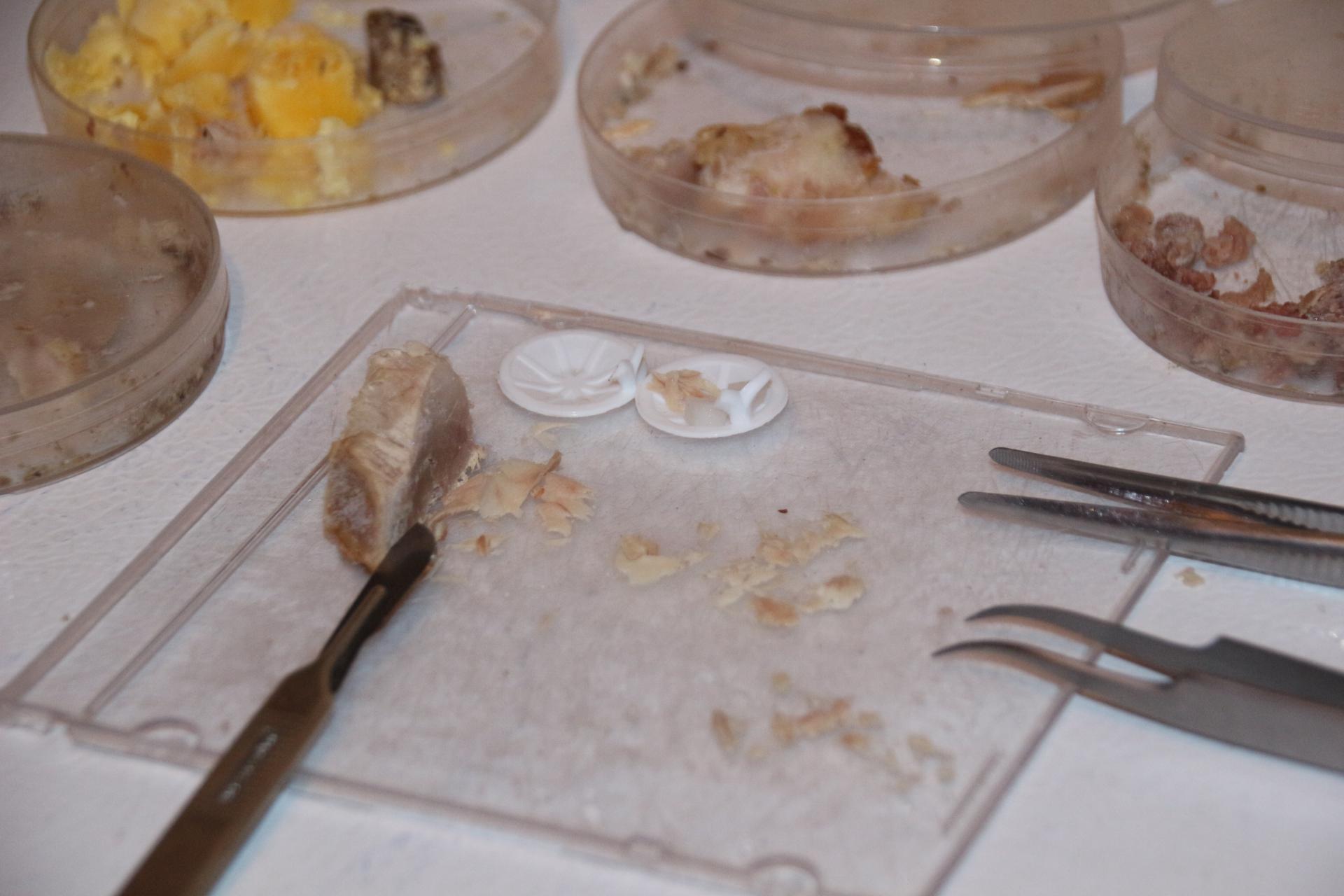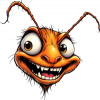Hello Everyone;
Right now, I keep 12 large colonies and 25 small colonies of various types of ants. After supper it takes me about 1 1/2 hours to feed, water, hydrate, and observe my ant colonies, I call it feeding time at the zoo. How I carry out this mission every day is the subject of this article and I hope you'll benefit from hearing about what I do.
In the photo below you can see the array of things that I require for the task of feeding protein, (meat and/or insects), sugar/water and drinking water, as well as hydrating each colony if necessary. From top left, going clockwise you can see the eye dropper and bottle of sugar/water that I use for small colonies being fed with a sponge. Next is a dental irrigator that I use for colony hydration and a pipette that I use to moisten sponges with drinking water. I sometimes use water fountains for small colonies as well. Below the mandatory cup of coffee are the tools I use - wide tweezers for removing trash and uneaten food, anything that might be contaminated with mites etc and needle nose tweezers that I only use for clean food and dishes. I use a paper towel to clean everything regularly. You can also see the scalpel that I use for preparing meat and insects for my ants. I shave all the meat I give my ants as I believe presentation is just as important as what you're feeding them. Meat that is shaved is easier for them to break off and easier to transport back to the nest. I think this helps increase the desirability of meat food items for the ants.
I feed my ants chicken, turkey and pork (cooked and raw), cooked chicken liver and cooked turkey liver, salmon, halibut, sardines, egg yolk, scrambled egg, canned dog food, and lunch meat. These are accepted by most of my colonies, there are some that are fussier than others, but most of them accept them quite readily. I also feed a wide array of insects to my ants, but I've been experimenting with a Camponotus colony that I've only fed meat to, no insects at all this season. The reason I started this is because their formicarium is pretty complex and I didn't want to deal with any trash removal, a big advantage of not feeding insects. They seem to be thriving quite nicely. I usually give things like flies to smaller colonies and larger insects, or pieces to larger colonies. Insect pieces keep large colonies busy and less likely to look for trouble.
Beside the tools is a small container containing "crumbs" - dried out pieces of meat that weren't fed in previous days but can still be used to feed my Tetramorium colonies that will eat almost anything. On the petri dish is the evenings meat offering - shaved chicken. I use the oyster from the back of the chicken, the tenderest meat on the bird. On the tray is the "catch of the day" insects - flies and June bug pieces. Below the chicken are examples of two feeding dishes that I use and to their left are containers with pieces of triangular sponge soaking in sugar/water and another container with square pieces of sponge soaking in drinking water. I have these ready to replace ones that are soiled or spoiled as I work my way through the colonies.
The photo above shows the suppertime offerings of another day. The top tray contains some of the insect harvest, flies, ambush bugs, and earwigs. I usually cut larger insects in half and at least cut the exoskeleton of smaller ones, so the ants have easy access to the innards. The meat is turkey, again the oyster from the back, which is shaved and shown in the petri dish. This is a good example to use to explain exactly what I mean by shaving meat across the grain. If you look closely at the turkey oyster on the left, you can see that it has grain, just like wood. The grain is formed by long bundles of muscle fiber. If you slice thinly across these bundles, or across the grain, the meat will be tender and fall apart. You can also see that if you slice with the grain, the meat will be stringy, tough, and difficult for ants to handle. For tender meat, always slice across the grain. This is true for your Sunday roast as well. Things like liver, dog food, and raw ground pork and ground chicken don't really have grain, but I freeze and shave them anyway to make them easier to feed. It's much easier to shave a piece of meat thinly if it's frozen than it is when it's thawed. Also, cutting an insect in half, lengthwise, I find, is much easier and much less messy, if it's done when the insect is frozen.
Beside the scalpel I have shown how I make a simple feeding dish from the security lid of a cream container. I just cut the ring off with scissors. In the photo below you can see how I place the feeding dishes inside the feeding port for easy refilling and feeding. The dish on the left has a sponge with sugar/water and the one on the right has shaved turkey. To the right of that you can see a test tube plugged with cotton which is how I supply drinking water to my larger colonies. I use test tubes to feed sugar/water to my larger colonies as well.
I usually feed my large colonies every day, every other day for the smaller ones. It can be difficult to feed small enough amounts to a young colony so they can finish it before it becomes mouldy, but I try my best to adjust the amount I feed them and remove mouldy food quickly. I try to observe my colonies after I feed them to assess their enthusiasm and eagerness. With these observations adjustments can be made to feed them the amount they will clean up in a couple of days.
I hope this information will be helpful to new ant keepers. This system works well for me, allowing me to look after quite a few colonies in a fairly short time every day. Good Luck with yours.
RPT



